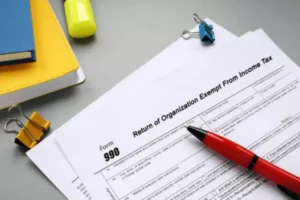Content
For example, if some of your compensation is paid in stock then the better the company does, the better you do. When an investment bank establishes the initial public offering (IPO) of a company, the bank will state the specific number of outstanding shares. The number of outstanding shares of a company can vary greatly over time. For instance, if the company decides to issue more https://simple-accounting.org/ shares, then its number of outstanding shares will naturally increase. Similarly, if the company institutes a program for repurchasing shares from investors, known as a buyback, its outstanding shares will decrease. When companies consider their stocks to be undervalued, they often initiate a share repurchase program, buying back some of their issued shares at a favorable price.
- Our writing and editorial staff are a team of experts holding advanced financial designations and have written for most major financial media publications.
- Any activity, operations, decisions, strategy, vision, and mission of the company are highly dependent on the availability of the share capital with the company.
- The number of outstanding shares can never exceed the number of authorized shares.
Issuing more shares than there are authorized makes those additional shares voidable. If a corporation has issued only one type, or class, of stock it will be common stock. The authorized shares are established in a company’s articles of incorporation and there is no limit as to the total number of shares that can be authorized within these documents for a larger company. Larger companies may have 100s of millions or billions of authorized shares. However, there is a limit to the number of authorized shares that can be designated for smaller companies has a set number of shareholders or no plans for expansion. These smaller companies may have only one million authorized shares for the founders and potential investors.
Chegg Products & Services
Issued and outstanding shares are the total number of shares that are already in the hands of founders, investors, and employees/advisors/contractors. The maximum number of shares that a company can ever legally issue is called the firm’s authorized shares. A company’s authorized share number is generally defined in its articles of incorporation and can be changed by the shareholders. The number of outstanding shares can never exceed the number of authorized shares.
In 2004, when it was incorporated, founder Mark Zuckerberg specified 100,000 authorized shares in the company’s articles of incorporation. For example, the CEO of a publicly-listed company may receive restricted stock that they are allowed to vest, if the company reaches a certain market capitalization or achieves a target earnings-per-share (EPS). Treasury stock is equal to zero when the number of Outstanding Shares is equal to the number for Authorized Stock. The share types that are eligible for inclusion in authorized stock include common, restricted, and preferred stock.
What are the Disadvantages of Capital Stock?
Finally, unissued shares are shares that have been created but have not yet been issued either to employees or in a future financing round. John, as an investor, would like to calculate the company’s market capitalization and its earnings per share. The authorized share capital is the maximum number of shares the company can issue to raise money as mandated in… The number of issued shares is always greater than or equal to the number of authorized shares. The number of outstanding shares is always equal to or less than the number of authorized shares.
For example, a figure of 1,000 shares for authorized stock means that the company cannot issue more than 1,000 shares for all types of stock. When a company repurchases stock for its treasury, the number of outstanding shares is reduced, which increases the value of the remaining outstanding shares. Likewise, when a company sells some of its treasury shares to raise capital, the number of outstanding shares is diluted, which lowers their value. A corporate charter, also known as a “charter” or as “articles of incorporation,” is a legal document that is used to start a corporation.
When Should a Startup Raise Venture Capital?
Adding the number of outstanding shares to the treasury shares would equal the total amount of issued shares. This section provides the sum of the total authorized shares, the total number of shares outstanding, and the total floating shares. Outstanding shares differ from treasury shares, which are the shares held by the company https://simple-accounting.org/how-many-shares-to-authorize/ itself and which cannot be sold in the open market. Treasury shares plus outstanding shares together form the total number of issued shares. Before their availability on the secondary market, shares are authorized, issued, and, finally, purchased by investors who became equity owners or shareholders of the issuing company.
Outstanding shares also help in understanding the market capitalisation or the value of the business. A positive shareholders’ equity indicates that the business can cover its liabilities with its own assets. In other words, the company’s assets are greater than the company’s liabilities. We will discuss how noncumulative and cumulative preferred stock affects cash dividends in the next unit. The articles of incorporation must be amended, which can only happen with shareholder approval and extensive refiling of documentation. But, changing articles of incorporation in closely-held or private companies is a shorter and relatively easy process.



